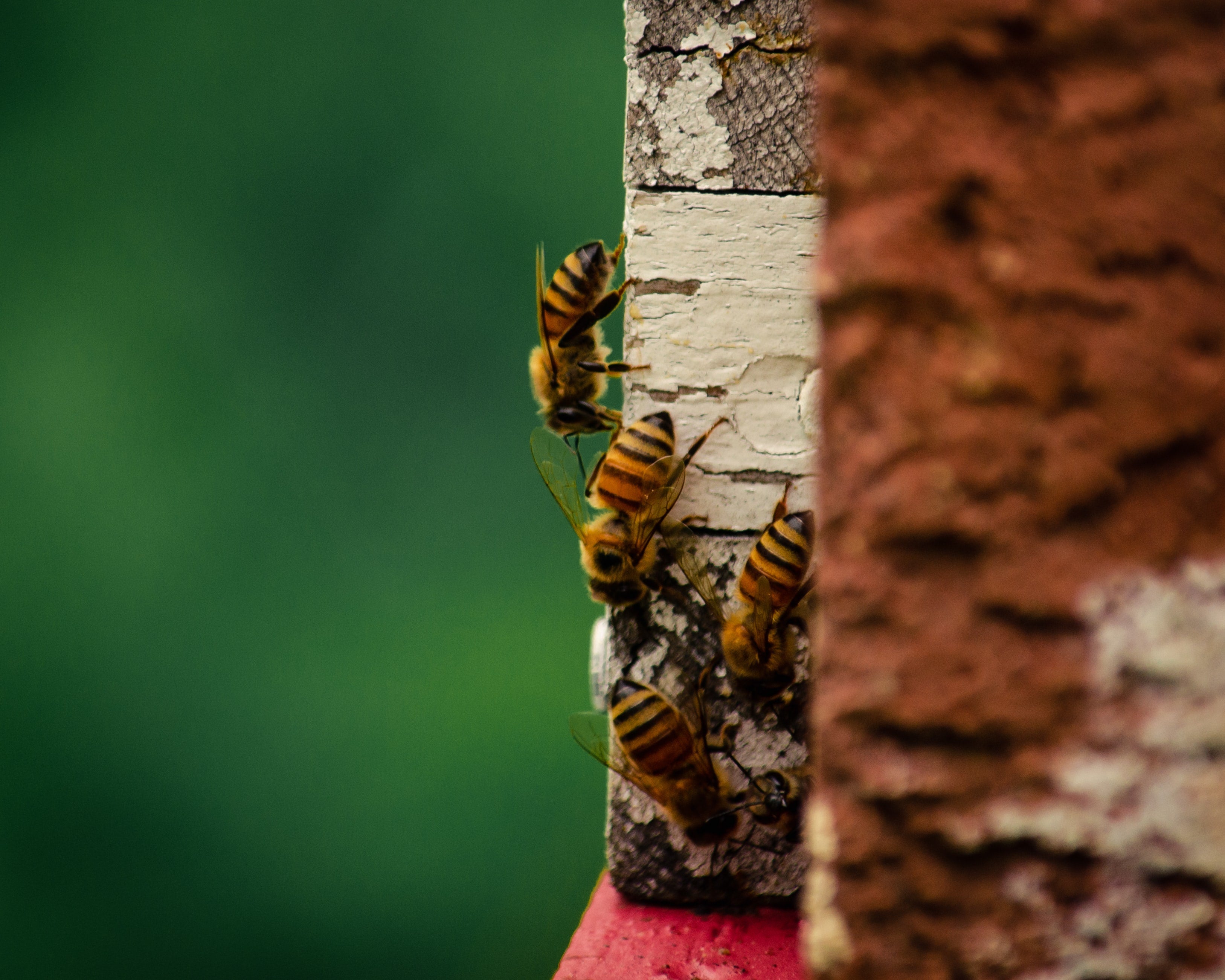- Varroa mites are tiny red-brown parasites about the size of a sesame seed that feed on bee larvae, pupae, and adults
- They spread through bee drift, robbing, infected equipment, and even other insects like bumble bees
- Early signs include scattered brood patterns, sunken cappings, and malformed bees with shortened lifespans
- Heavy infestations lead to colony collapse if left untreated, making early detection vital
Understanding the Varroa Threat: Australia's Most Serious Bee Parasite
Welcome, fellow bee enthusiast! Varroa destructor represents the most serious threat to honey bee colonies worldwide, and understanding this parasite is essential for every Australian beekeeper. These tiny external parasites have caused devastating losses in bee populations across the globe, making proper identification and early detection critical skills for maintaining healthy hives.
The key to effective varroa management starts with knowing exactly what you're looking for. This complete guide will help you develop the diagnostic skills needed to spot varroa mites early, understand how they spread, and recognize the warning signs that demand immediate action in your colonies.
Physical Identification: What Varroa Mites Actually Look Like

Varroa destructor mites are external parasites roughly the size of a sesame seed, measuring about 1-2 millimeters in length. These tiny creatures have a distinctive red-brown color that can range from light amber to dark reddish-brown, depending on their feeding stage and age.
Key Physical Characteristics
Adult female varroa mites (the ones you'll typically see) have several distinct features that help with identification:
| Characteristic | Description | What to Look For |
|---|---|---|
| Size | 1-2mm long, 1.5mm wide | About the size of a sesame seed |
| Color | Red-brown to dark brown | Darker when well-fed, lighter when newly emerged |
| Shape | Flat, oval, crab-like | Wider than long, flattened body |
| Movement | Slow, deliberate crawling | Unlike fast-moving other mites |
| Location on Bee | Thorax, between head and abdomen | Usually on the back/top side of bee |
Understanding Varroa Lifecycle and Feeding Behavior
Varroa mites have a complex lifecycle that involves both reproductive and feeding phases. Adult female mites primarily feed and reproduce on developing bee larvae and pupae within sealed brood cells, but they also feed on adult honey bees during their dispersal phase.
The feeding process weakens individual bees and makes them more susceptible to viral infections. This dual impact - direct feeding damage plus viral transmission - is what makes varroa so devastating to colony health.
How Varroa Mites Spread Between Colonies
Understanding how varroa spreads helps you take steps to protect your hives and identify potential sources of infestation. These parasites are highly mobile and use several methods to move between colonies.
Primary Spread Methods
Varroa mites spread through both natural bee behaviors and human beekeeping activities:
Method 1: Bee Drift and Robbing
Worker bees naturally drift between nearby hives, especially during high activity periods. Infected bees carrying mites can introduce varroa to clean colonies. Robbing behavior, where bees from strong colonies raid weaker ones, provides another pathway for mite transmission.
Method 2: Swarm Movement
When infected colonies swarm, the departing bees carry mites to new locations. This natural reproduction method can spread varroa across large distances if swarms establish in new areas.
Method 3: Equipment and Management Practices
Beekeepers can accidentally spread mites by moving frames, boxes, or other equipment between infected and clean hives without proper cleaning. Using second-hand equipment from unknown sources poses particular risks.
Method 4: Other Insects
Varroa can hitchhike on other flower-visiting insects like bumble bees, flower flies, and even wasps. While less common than direct bee-to-bee transmission, this method can introduce mites to isolated apiaries.
Method 5: Commercial Bee Movement
Transport of package bees, nucleus colonies, or full hives for commercial purposes represents a high-risk spread method, especially when proper quarantine and testing protocols aren't followed.
Early Warning Signs: Recognizing Varroa Symptoms
Early detection gives you the best chance of successful varroa management. Symptoms develop gradually as mite populations build, so regular monitoring helps catch infestations before they cause serious damage.
Adult Bee Symptoms
Watch for these changes in adult bee behavior and appearance:
| Symptom | What You'll See | Infestation Level |
|---|---|---|
| Malformed bees | Shortened abdomens, deformed wings, missing legs | Moderate to heavy |
| Flight problems | Bees crawling instead of flying, spinning on ground | Moderate to heavy |
| Visible mites | Red-brown parasites on bee bodies | Light to moderate |
| Reduced lifespan | Lower return rates from foraging trips | All levels |
| Underweight bees | Smaller, lighter adult bees | Moderate to heavy |
Brood Pattern Changes
Brood symptoms often appear before adult bee problems become obvious:
Systematic Varroa Detection Process
Regular inspection using a systematic approach helps ensure you catch varroa early. Follow these steps during every hive inspection to monitor for mite presence.
Step 1: Visual Adult Bee Inspection
Start by examining adult bees on frames as you work through the hive. Look carefully at the thorax area of worker bees for small, red-brown mites. Pay special attention to nurse bees, which often carry higher mite loads than foragers.
Step 2: Brood Pattern Assessment
Check brood frames for scattered patterns, sunken cappings, and abnormal cell appearances. Healthy brood should show solid, even patterns with minimal empty cells. Note any areas where cappings appear chewed, sunken, or darker than normal.
Step 3: Uncapped Cell Examination
Look into uncapped brood cells for larvae that appear slumped to one side or bottom of the cell. Healthy larvae should be plump and centered in their cells. Also check for small mites moving within brood cells.
Step 4: Bottom Board Inspection
Check the bottom board for fallen mites, especially if you use screened bottom boards. Dead mites appear as small, brown, oval objects among other hive debris. While not definitive alone, this can support other diagnostic findings.
Step 5: Document and Track Findings
Record your observations in detail, including date, weather conditions, colony strength, and specific symptoms observed. This documentation helps track infestation progression and treatment effectiveness over time.
When Low Infestations Become Dangerous
Varroa populations can grow rapidly under the right conditions. Understanding when to take action helps prevent small problems from becoming colony-threatening infestations.
Colonies with low mite levels may show few obvious symptoms, making regular monitoring essential. As mite populations increase, symptoms become more apparent and colony stress increases dramatically.
Critical Action Thresholds
These guidelines help determine when immediate intervention is necessary:
| Infestation Level | Visual Signs | Action Required |
|---|---|---|
| Low (1-3%) | Few visible mites, minimal symptoms | Continue monitoring, prepare treatment plan |
| Moderate (4-6%) | Scattered brood, some visible mites | Begin treatment within 2-4 weeks |
| High (7-10%) | Clear symptoms, multiple mites visible | Immediate treatment required |
| Critical (>10%) | Severe symptoms, colony decline | Emergency treatment, may need requeening |
Prevention Strategies for Australian Beekeepers
Preventing varroa introduction is far easier than treating established infestations. These strategies help reduce your risk of mite introduction and early spread.
Apiary Management Practices
Good management reduces varroa spread risk and makes early detection more likely:
- Maintain adequate spacing between hives to reduce bee drift
- Avoid placing hives in direct flight paths of known infected apiaries
- Keep colonies strong and healthy to resist mite establishment
- Replace old brood comb regularly to disrupt mite reproduction
- Monitor and control robbing during dearth periods
Equipment and Biosecurity
Proper equipment handling prevents accidental mite introduction:
Working with Veterinarians and Bee Health Specialists
Professional support becomes essential when dealing with varroa infestations. Australian beekeepers have access to veterinary specialists and extension services that can provide guidance on identification, testing, and treatment protocols.
Consider professional consultation when you observe suspicious symptoms but aren't certain about varroa presence, when initial treatments haven't been effective, or when dealing with multiple colony problems. Early professional guidance can save both time and colonies.
Diagnostic Testing Options
Several testing methods can confirm varroa presence and measure infestation levels:
- Alcohol wash testing for accurate mite counts
- Sugar shake testing as a non-lethal alternative
- Sticky board monitoring for ongoing assessment
- Professional laboratory testing for definitive identification
Summary of Key Takeaways
- Varroa mites are red-brown, sesame seed-sized parasites that feed on bee larvae, pupae, and adults, causing malformation and viral transmission
- They spread through bee drift, robbing, swarms, contaminated equipment, and even other insects, making prevention challenging but essential
- Early symptoms include scattered brood patterns, sunken cappings, malformed bees, and reduced flight performance
- Regular systematic inspection focusing on both adult bees and brood patterns helps catch infestations before they become colony-threatening
- Professional consultation and proper testing methods provide definitive diagnosis and treatment guidance when symptoms are unclear
Ready to Protect Your Hives from Varroa?

Ecrotek Australia gives you the tools and knowledge you need for effective varroa detection and management. From testing kits to treatment options, we're here to help you keep your colonies healthy and productive.
Shop Varroa Detection ProductsOr contact our team today for personalised advice on varroa management solutions for your beekeeping operation.


